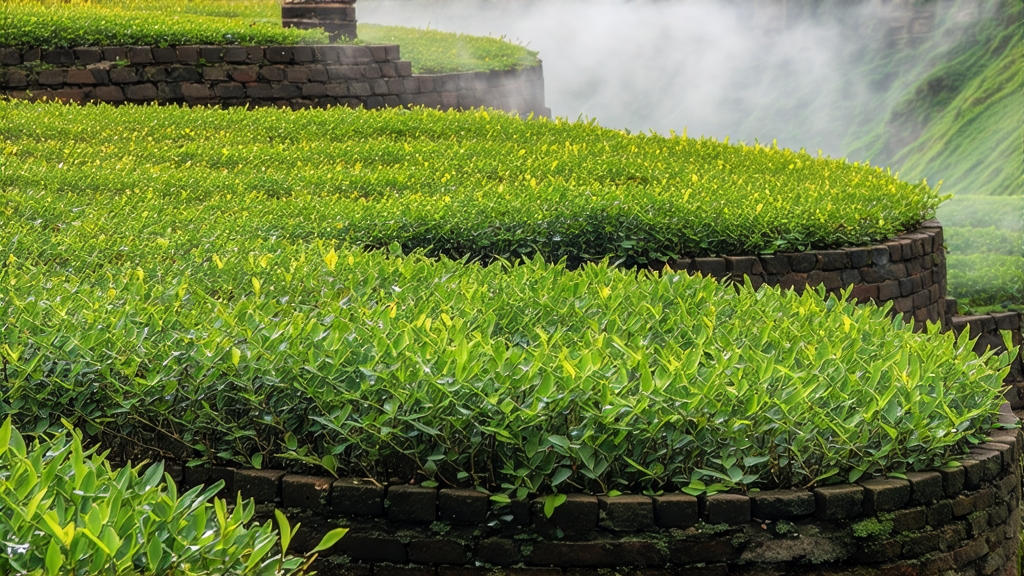
Tucked high above the Sichuan basin, where the Min River bends like a jade ribbon around peaks often veiled in cloud, lies Meng Ding Mountain—birthplace of the world’s oldest recorded tea garden and home to the most ethereal of China’s six tea families: yellow tea. Among the handful of yellow teas that survive today, none carries more dynastic prestige or sensory subtlety than Meng Ding Huang Ya, the “Yellow Bud from the Summit of Meng.” For more than twelve centuries this tea was carried by mule and sedan chair to the emperors of Tang, Song, Ming and Qing; then, almost overnight, it vanished from market lists, kept alive only by a few stoic monks and one stubborn family line of tea makers. Its re-emergence in the last three decades is a quiet miracle of Chinese tea archaeology and slow-food patience, offering the global tea table a taste that is literally yellow—bright liquor, golden down on the bud, and a flavor that lingers like late-afternoon sunlight on old stone.
History: from imperial altar to endangered relic
Meng Ding’s tea legend begins in 53 BCE, when the Taoist cultivar-god Wu Lizhen planted seven tea bushes on the summit, declaring them “celestial herbs.” By Tang times (618-907 CE) the mountain’s spring buds were already taxed as “tribute,” but the yellow variant—achieved through a then-secret extra “sealed yellowing” step—was first chronicled in 825 CE when poet Li Bai tasted it at a monastery and wrote of “golden frost on the tongue.” Song emperors so prized the buds that they exempted the monks from corvée labor; Ming protocol specified that picking could begin only when the first thunder of spring was heard, and only virgins wearing silk gloves were allowed to touch the shoots. The last imperial order was placed in 1908; with the fall of the Qing the technique drifted into obscurity, replaced by faster green teas for export. When the Sichuan Tea Research Institute re-collected the heirloom bushes in 1981, only 0.8 mu (about 530 m²) of ancient plantings remained, guarded by a single monk named Shi Qingyuan who still knew the yellowing chant—“two wraps, three piles, one breath of fire.”
Terroir and cultivar: why the bud turns yellow naturally
Meng Ding sits at 29.8° N, 1,450 m above sea level, bathing in a subtropical monsoon climate that gives 2,000 mm of rain and 280 foggy days each year. The constant cloud cover filters UV light, forcing the tea bush (a local narrow-leaf Camellia sinensis var. sinensis clone called “Ganzhu”) to synthesize more theanine and fewer bitter catechins. Spring temperatures fluctuate between 12 °C at night and 22 °C at noon; the 10-degree swing slows growth so that only the terminal bud and the first unfolding leaf reach the standard “one bud, one leaf, 2.5 cm” length. These tiny shoots are already pale jade because chlorophyll formation is inhibited by the cool mist; after yellowing they turn an even more delicate primrose, giving the tea its name.
Craft: the invisible 48-hour fermentation that is not oxidation
Western tea science usually categorizes yellow tea as “lightly oxidized,” but that is a misnomer. The defining phase is non-enzymatic yellowing—humid, anaerobic warming that denatures chlorophyll while preserving catechins, creating methylated flavonols that taste like roasted sweet corn. The process unfolds in five meticulous steps:
- Kill-green with bamboo-roast: 180 °C for 4 minutes in a cylinder woven from Meng bamboo. The inner surface is smoked with cedar twigs the night before, imparting a resinous halo that will later echo in the cup.
- First wrap: the hot leaf is immediately piled into double-layered rice-paper bundles, 250 g each, and buried in a hemp-lined cedar box. Core temperature is held at 38 °C for 2 hours; the leaves turn sulphur-yellow at the edges.
- Primary roll: light twisting for 6 minutes to rupture 18 % of cell walls—enough to release sap but keep the bud intact.
- Second wrap & yellowing: the most guarded step. Bundles are re-stacked, covered with steamed gau